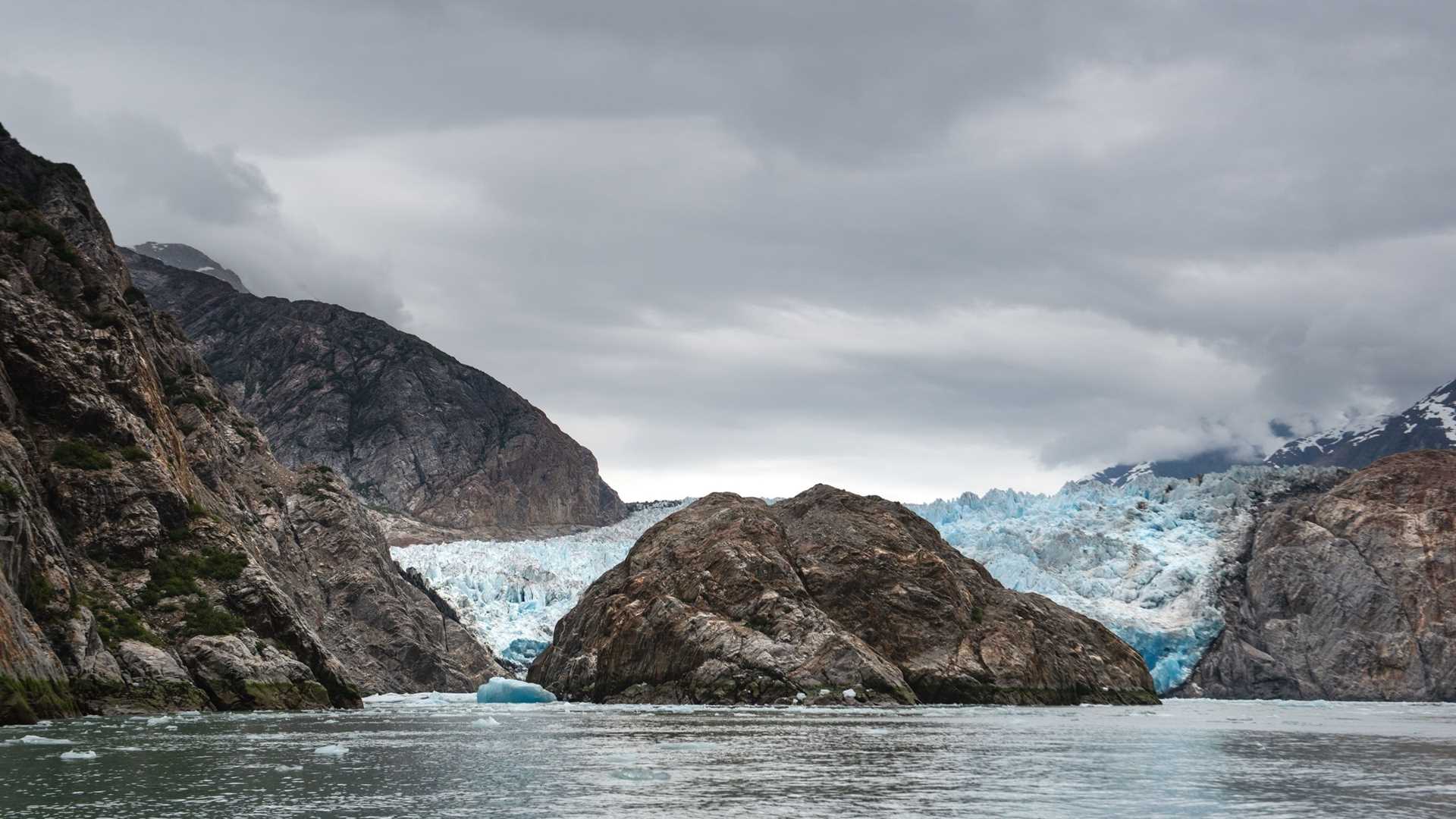In this landscape of rock and sea, everything is at the mercy of ice. For 15 sinuous miles, during the early hours of the morning, we transited the overwhelming topography of Tracy Arm, one of the fjord systems that makes up Tracy Arm-Ford’s Terror Wilderness Area. Our eastbound progress aboard the National Geographic Sea Bird ended at the juncture where the Sawyer and South Sawyer glaciers parted ways in the early 1900s. Now, over 100 years later, the South Sawyer Glacier is roughly 4 miles further east and the object of our desire during our morning Zodiac cruises.
Through ice-peppered water we motored within humbling distance of this 120 feet wall of ice that seemed to be coming apart at the seams. Piece after noisy piece of glacial ice was born to the sea during our stay, punctuating the overwhelming scenery with claps of what locals call “white thunder.”
In the 4 miles that separated our ship from the glacier, there have been many changes to the landscape since I first started coming here 15 years ago. One of the most pronounced was the addition of an island. Now, roughly a mile from the glacier’s face, it is the newest geological feature to have emerged since the South Sawyer Glacier began its most recent advance during the Little Ice Age in the 1600s. This tiny little island, exposed for less than 10 years has, to my knowledge, no name yet. Composed of metamorphosed rock known as gneiss, it has just started to harbor small trees and a few plants and represents a stark reminder of the forces at play in this ever developing, ever changing landscape of rock and sea and ice.







